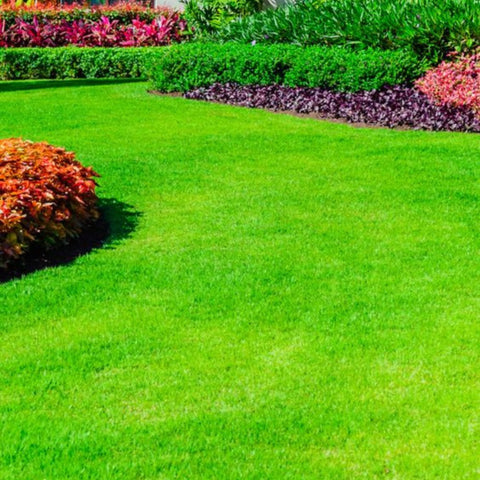Blog Post - Growing grass in Spring
Welcome to our comprehensive guide on growing grass in spring! If you're a homeowner or a gardening enthusiast, you understand the importance of a well-maintained lawn. A lush and vibrant grass not only enhances the aesthetic appeal of your property but also provides a safe and enjoyable space for various activities. In this article, we will walk you through the essential steps to ensure that your grass flourishes during the spring season, which is the ideal time for grass growth and rejuvenation.
Preparing Your Lawn

Before you start sowing new grass seeds, it's vital to prepare your lawn adequately. Begin by clearing away any debris, dead grass, or weeds that may have accumulated over the winter months. Raking or using a leaf blower can effectively remove these elements and provide a clean slate for your lawn.
Next, evaluate the quality of your soil and its pH levels. Soil quality plays a significant role in grass growth, so it's crucial to ensure that it is well-drained and nutrient-rich. You may consider conducting a soil test to determine its pH level and make necessary amendments.
Aeration and dethatching are essential steps in promoting better root growth. Aerating your lawn helps alleviate soil compaction and improves water and nutrient absorption. Dethatching, on the other hand, eliminates the layer of dead organic material called thatch, allowing new shoots to grow more efficiently.
Selecting the Right Grass Seed and Fertilizer

Choosing the appropriate grass species for your climate is crucial for successful growth. Different grass types thrive in different climates, so do some research or consult a local gardening expert to ensure you select the right one.
When it comes to grass seed mixtures, understanding their benefits is essential. Some mixtures are designed to withstand heavy foot traffic, while others have a high tolerance for shade or drought. Consider your lawn's specific needs and select a mixture that suits them.
Similarly, selecting the suitable fertilizer is vital to provide your grass with the necessary nutrients. Various factors, such as grass type and soil condition, should be taken into account when choosing the right fertilizer. Consulting a professional or using a soil test kit can assist you in determining the correct fertilizer for your lawn.
Seeding Your Lawn Properly

Proper soil preparation is critical for successful grass seed germination. Ensure that the soil is loose and free from debris before sowing the seeds. Raking the soil or using a garden tiller can help create a smooth and even surface.
When spreading the grass seed, aim for an even distribution to achieve uniform growth. You can use a spreader for larger areas or your hand for smaller patches. Take care not to sow the seeds too densely, as overcrowding can hinder healthy growth.
While sowing the seeds, it's important to protect them from birds, inclement weather, and foot traffic. Consider using a light layer of straw or a protective netting to shield the seeds. Regularly check the weather forecast to avoid heavy rainfall, which can wash away the seeds.
Watering and Maintenance

Establishing a watering schedule is crucial for the germination and growth of your grass. During the initial stages, water the seeded area lightly but frequently to keep the top inch of soil consistently moist. As the grass grows, gradually reduce the frequency of watering but increase the amount of water given each time.
When it comes to mowing, use proper techniques to encourage healthy growth. Set your mower blades to an appropriate height, usually around 3 inches, to promote deep root development. Avoid cutting more than one-third of the grass blade length at a time to prevent stress and damage.
Dealing with common lawn problems such as weeds, diseases, and pests is essential for maintaining a healthy lawn. Regularly inspect your grass for signs of weeds or diseases, and promptly take action to prevent their spread. Consider using organic or environmentally friendly pest control methods to avoid harming beneficial insects and pollinators.
Additional Tips for Healthy Grass Growth

In addition to the previously mentioned steps, there are a few more practices that can help ensure healthy grass growth in the long run. Regular fertilization and soil testing will provide your lawn with the necessary nutrients and help you identify any deficiencies. If you notice thin or patchy areas in your lawn, consider overseeding to improve density and coverage. Finally, remember that proper lawn care throughout the year is vital for maintaining the growth achieved in spring.
Conclusion
Growing lush and healthy grass in spring requires careful preparation and maintenance. By following the steps outlined in this comprehensive guide, you can ensure that your lawn thrives during the peak growing season. Remember to select the right grass seed, prepare your soil adequately, protect the new seeds, and provide proper watering and maintenance. By doing so, you'll be rewarded with a beautiful and vibrant lawn that you can enjoy all year round. Happy gardening!






























Comments (0)
There are no comments for this article. Be the first one to leave a message!